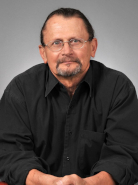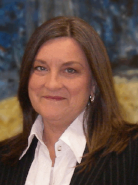HamSCI Workshop 2023: Forging Amateur-Professional Bonds

March 17-18, 2023
A Hybrid In-Person and Virtual Workshop
Come join HamSCI at its sixth annual workshop March 17-18, 2023 at The University of Scranton. The primary objective of the HamSCI workshop is to bring together the amateur radio community and professional scientists. The theme of the 2023 HamSCI Workshop is Forging Amateur-Professional Bonds.
This workshop will also serve as a team meeting for the HamSCI Personal Space Weather Station project, a NSF-funded project to develop a citizen science instrument for studying space weather from your backyard. The PSWS is led by the University of Scranton, and includes participation from TAPR, Case Western Reserve University/W8EDU, the University of Alabama, the New Jersey Institute of Technology CSTR, MIT Haystack Observatory, Dartmouth College, and the amateur radio community at large.
The 2023 HamSCI workshop is organized by The University of Scranton with generous financial support provided by the United States National Science Foundation and ARDC. HamSCI is an officially recognized NASA Citizen Science project.
Invited Speakers
Invited Scientist Tutorial: Dr. Joseph Huba, “Modeling the Ionosphere with SAMI3”

Invited Amateur Radio Tutorial: Mr. Jesse Alexander WB2IFS, “The Ham Radio Project: Exploring the Electromagnetic Spectrum”

Keynote Speaker: Dr. Patricia Reiff W5TAR, “Forging Amateur-Professional Bonds”

W3USR Special Event Station
The HamSCI Workshop will feature a real, working special event amateur radio station using the callsign W3USR! In-person participants are encouraged to stop by the station and guest operate or learn about how an amateur radio station works. We are grateful to the Murgas Amateur Radio Club K3YTL for organizing and running the W3USR Special Event Station. QSL information will be available here and on QRZ.com at a later date.
Amateur Radio Licensing and Exams
Although an amateur radio license is not a prerequisite to participate in HamSCI, we encourage participants to pursue a license. Getting a Technician Class license requires passage of a 35 question multiple choice test with a public question pool. Hamstudy.org provides free practice tests and materials and access to real online exam sessions. The ARRL also has an excellent selection of license study materials. You can also earn your amateur radio license at the HamSCI Workshop! An in-person Volunteer Examiner (VE) session will be held during the Saturday afternoon session. Please review the ARRL's "What to bring to an exam session" prior to the session. We are grateful to the Scranton Pocono Amateur Radio Club K3CSG (SPARK) for running this session.
Amateur Radio Through the Ages Exhibit
Amateur Radio Through the Ages Exhibit is an exhibit of historical amateur radios, QSL cards, QST magazines, and radio accessories on display at the University of Scranton Loyola Science Center / Hope Horn Gallery during the Spring 2023 semester. This exhibit is presented by the Murgas Amateur Radio Club K3YTL, The University of Scranton Amateur Radio Club W3USR, and The University of Scranton Department of Physics and Engineering, especially Tom Mayka W3TRM, Bill Gallagher WA3RA, Herb Krumich K2LNS, Ian Kellman K3IK, Phil Galasso K2PG, Elaine Kollar K3VQR, Dave Kirby N3SRO, Dr. Darlene Miller-Lanning, and Dr. Nathaniel Frissell W2NAF.
Friday Night Banquet and Door Prizes
The HamSCI Workshop Banquet will be help Friday, March 17, 2023 at the Historic Radisson Lackawanna Station Hotel and will feature keynote speaker Dr. Patricia Reiff, W5TAR. Thanks to a very generous donation from DXEngineering, this year we will have door prizes at the banquet! Door prizes include an Icom IC-7300 and ten $100 gift certificates to DXEngineering. Thank you, DXEngineering!
Logistics
Registration
In-Person Participation
In-person registration is now closed. However, you can still join us virtually! Please see below.
Virtual Participation
For those who cannot attend in-person, we offer a virtual participation option. Virtual participation will be via the Zoom platform. All oral presentations, tutorials, and the banquet keynote will be available via this platform. These presentations will be available for viewing after the workshop as well. Virtual participation is free of charge.
Location
The 2023 HamSCI Workshop will be held in the Loyola Science Center on The University of Scranton Campus.
Parking
Parking is provided free of charge during this event on the 4th floor and roof of the University of Scranton Parking Pavilion. Participants without University of Scranton parking permits must park on the 4th floor or the roof of the parking pavilion.
Lodging
Lodging will be available at the Radisson Lackawanna Station Hotel Scranton and the Hilton Scranton & Conference Center. Both hotels are in walking distance to the workshop.
- For reservations at the Radisson Lackawanna Station Hotel Scranton, please call 570-342-8300 or 866-715-7836 and say that you are reserving for the HamSCI Workshop. The rate of US$109/night + 13% tax is valid the nights of March 16 - 19, 2023.
Transportation
The University of Scranton and the HamSCI Workshop 2023 is located only 15 minutes from the Wilkes-Barre/Scranton (AVP) International Airport.
Participation Guidelines
All participants in the HamSCI Workshop 2023 are expected to treat each other with respect and follow the HamSCI Workshop 2023 Participation Guidelines, which include The University of Scranton's Non-Discrimination, Anti-Harassment, Sexual Harassment, and Sexual Misconduct Policies. In-person participants and presenters will be required to sign and abide by the The University of Scranton HamSCI Workshop 2023 Waiver.
Science/Program Committee
- Dr. Nathaniel Frissell, W2NAF, The University of Scranton, Chair
- Mr. Jesse Alexander, WB2IFS, National Radio Astronomy Observatory
- Dr. Kristina Collins, KD8OXT, Case Western Reserve University
- Dr. Philip Erickson, W1PJE, MIT Haystack Observatory
- Mr. Bill Liles, NQ6Z, HamSCI Community
- Ms. Veronica Romanek, KD2UHN, The University of Scranton
Local Organizing Committee
- Dr. Nathaniel Frissell, W2NAF, The University of Scranton, Chair
- Ms. Salisa Brown, The University of Scranton
- Prof. Rachel Frissell, W2RUF, The University of Scranton
- Ms. Frani Mancuso, The University of Scranton
- Ms. Veronica Romanek, KD2UHN, The University of Scranton
- Dr. Christine Zakzewski, The University of Scranton
Questions?
Please e-mail hamsci@hamsci.org.

The 2023 HamSCI workshop is organized by The University of Scranton with generous financial support provided by the United States National Science Foundation (NSF) and Amateur Radio Digital Communications (ARDC). HamSCI is an officially recognized NASA Citizen Science project.

